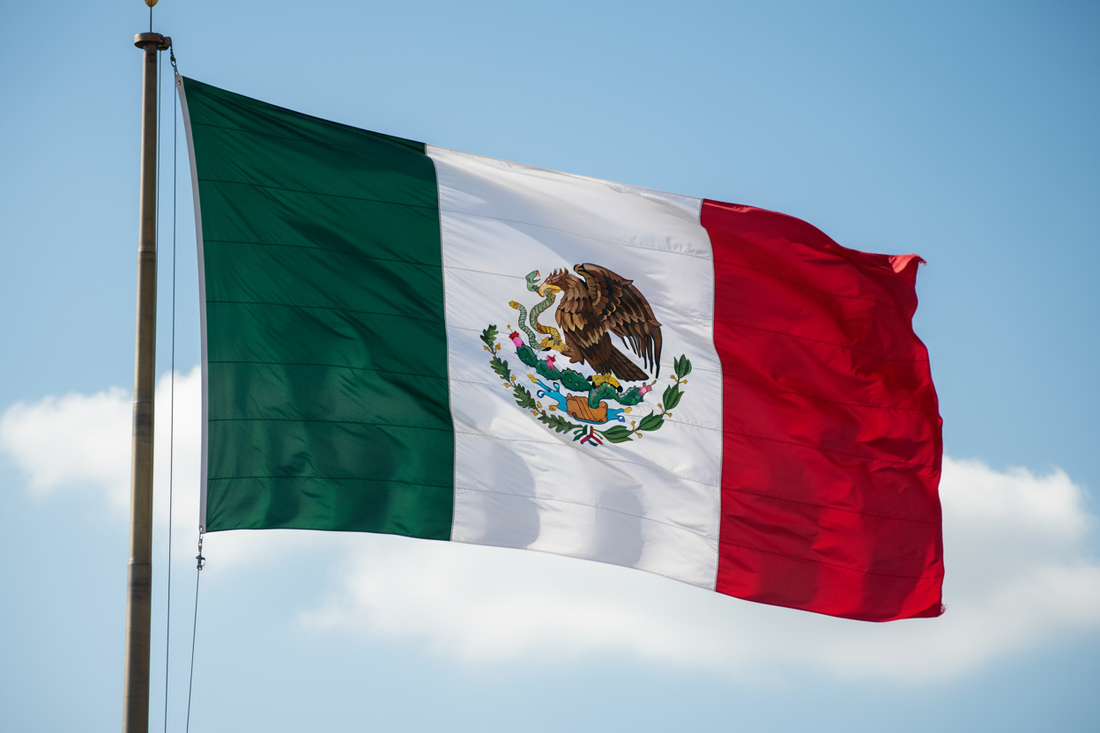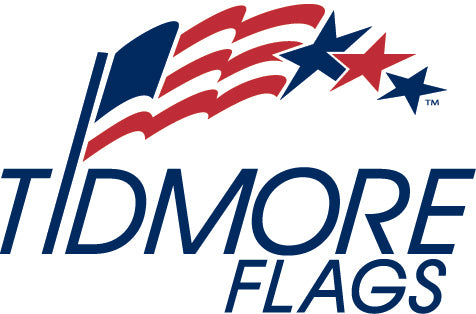The Mexican Flag You’ll Be Proud to Fly: How to Choose the Right One (and Avoid the $12 Mistake)

Share
Picture this: it’s a bright morning, your block is buzzing for a festival, and you raise a fresh green-white-red tricolor. The coat of arms—the eagle and serpent—catches the light just right. Neighbors look up. People smile. That moment feels like home.
Now imagine the other version: a glossy marketplace bargain shows up fast, but two weeks later the red is pink, the white has a gray cast, and the fly end is shredded. You wanted pride; you got disappointment.
If you’ve ever searched “where can I buy a Mexican flag,” “where to buy a Mexican flag,” “buy Mexican flag,” or “Mexico flag sale,” this guide is for you. We’ll cover how to choose a Mexican flag that looks great and lasts, how to size it to your pole, what materials matter in your climate, and how to avoid the throwaway purchase. We’ll also share a simple “best flag test” checklist you can apply in 60–90 seconds before you buy.
A quick story: The parade that changed Miguel’s mind
Miguel runs a small café in a college town. In September, he ordered a “great-deal” tricolor for the Grito de Dolores celebration. The colors looked okay out of the bag, but the red dulled fast. By the weekend parade, the fly end had started to string, and the coat of arms looked soft—almost blurry at a distance.
His neighbor across the street had a heavier tricolor with crisp details and a reinforced fly end. Same sun. Same wind. Different results. Monday morning, Miguel took down the bargain flag, searched for a better one, and learned what you’re about to learn here—how to buy a Mexican flag you’ll be proud to fly for months, not weeks.
What makes a great Mexican flag (and why some don’t last)
Before you click “buy,” pause for 90 seconds and look for these build details—the same checks pros use for durable outdoor flags:
- Fabric fit for your wind
- Outdoor nylon: Lightweight, bright, dries fast, flies in light breeze—best for most homes and storefronts.
- 2-ply polyester: Heavier, more abrasion-resistant—best for open, windy, or coastal locations.
-
Fly-end reinforcement
The fly end is where flags fail first. Look for a double-fold hem with multiple rows of lock-stitching (not chain stitching), plus box-stitching at the upper corner. -
Header & grommets
A sturdy canvas header and heavy-duty grommets carry the load. Thin, plasticky headers are an early-failure warning. -
Colorfast dyes
UV-resistant color chemistry keeps the green-white-red true. Cheap dyes go pastel quickly. -
Crisp artwork
The coat of arms should be sharp and proportionally placed. Better flags keep details legible from the curb. -
Origin & consistency
Buy from a specialist with predictable specs and support—not a one-off listing with mystery materials.
Where to buy a Mexican flag (so you don’t overpay twice)
If your search history looks like “where can I buy a Mexican flag,” “where to buy a Mexican flag,” or “buy Mexican flag,” here’s the short list:
-
Specialty flag retailers (like Tidmore Flags)
Pros: Curated fabrics (nylon vs. 2-ply poly), consistent stitching, multiple sizes, hardware that actually fits, real support.
Ideal for: Homes, schools, restaurants, community organizations, and parades.Buy Mexcio Nylon Flag from Tidmore Flags
If you’re preparing for Grito, Independence Day (Sept 16), soccer watch parties, or a city festival, give yourself at least two weeks to order the right size and any brackets, poles, or lighting you may need.
How to choose the right size (match flag to pole like a pro)
Sizing is simple once you know the ratios:
- Porch/Wall bracket with a 5–6 ft pole → 3′×5′ flag
- In-ground 15–20 ft pole → 3′×5′ flag
- In-ground 20–25 ft pole → 4′×6′ flag
- In-ground 25–30 ft pole → 5′×8′ flag
- Indoor presentation sets (7–9 ft poles) → 3′×5′ or 4′×6′ pole-sleeve flags
If you’re on a hill or far from the road, bump one size up for better curb visibility—but always respect wind ratings.
The “bargain vs. built-to-last” story (Miguel’s fix)
After the parade disappointment, Miguel ordered two flags from a specialty retailer: a 3′×5′ nylon for everyday use and a 2-ply polyester backup for windy weeks. He added a tangle-free spinning pole and a heavy bracket to stop wrap-around (which frays fly ends). He also grabbed a solar top-mount light because he likes the look at night and wants to follow respectful display habits.
Three months later: the nylon still looked great for daily flying. On forecasted windy weekends, he swapped in the 2-ply polyester. One decision, two flags, fewer headaches. He spent less than he would have replacing the bargain flag multiple times—and the café looks sharp in every season.
The “best flag test” you can do in 60 seconds
Borrow this quick checklist and apply it to any outdoor flag (including the Mexican tricolor):
- Fly end: Double-fold + multiple rows of lock-stitching; box-stitch in the upper corner.
- Header: Sturdy canvas; heavy grommets.
- Fabric: Nylon (most sites) or 2-ply polyester (windy/coastal).
- Dyes: Colorfast—no chalky look out of the bag.
- Artwork: Crisp, proportional coat of arms.
- Retailer: Specialist support; consistent specs.
If any of these are missing, you’re paying to test someone else’s learning curve.
Where you’ll fly it—and what that means for fabric
- Home porches & apartments: Go nylon for easy-fly brightness. Add a spinning pole and a heavy bracket.
- Open yards & coastal sites: Step up to 2-ply polyester—heavier fabric resists snap forces and abrasion.
- Restaurants, schools, community centers: You want consistent color and polish. Keep a spare flag to rotate for special events; rotate to extend life.
- Night displays: Add lighting. Whether it’s a top-mount solar disc or ground up-lights, aim for even illumination across the tricolor.
One list to screenshot: Your Mexican Flag buyer’s checklist
- Nylon or 2-ply polyester listed (no mystery fabric)
- Double-fold fly end with multiple rows of lock-stitching
- Box-stitching at the fly-end corner
- Canvas header + heavy-duty grommets
- UV-resistant, colorfast dyes (reds stay red)
- Crisp coat of arms (no muddy details)
- Correct size for your pole height
- Support from a real retailer (returns, advice, replacement parts)
Care that adds months of life (simple, quick, worth it)
- Rinse after storms or salty days; let dry fully before storage.
- Trim light fray early and re-hem if possible—damage spreads fast at the fly end.
- Lower in severe wind when you can; rotate in the heavier 2-ply polyester if wind is your norm.
- Store folded in a breathable bag or case; avoid plastic that traps moisture.
Why the cheap option costs more (and looks worse)
It’s tempting to chase a deal, but bargain flags cut corners in all the places that matter: thin fabric, chain stitching, weak headers, inconsistent dyes. Replace two or three throwaway flags in a year and you’ll spend more than one properly built flag—while your display looks tired and frayed between deliveries.
Quick answers (FAQ)
Q: What size Mexican flag should I buy for a porch set?
A: 3′×5′ is the standard for 5–6 ft wall-mounted poles. For in-ground poles, use 3′×5′ for 15–20 ft; 4′×6′ for 20–25 ft; 5′×8′ for 25–30 ft.
Q: Nylon or 2-ply polyester?
A: Nylon for most homes—bright and easy to fly. 2-ply polyester for steady wind, open fields, or coastal sites.
Q: How long will a quality flag last?
A: It depends on wind and sun. Typical daily-flying ranges: nylon 3–6+ months; 2-ply polyester 4–8+ months in windier zones. Rotating two flags extends service life.
Q: How do I prevent wrap-around on my porch?
A: Use a tangle-free spinning pole and keep clearance from walls, trees, and rough surfaces.
Q: Can I fly the Mexican flag with another flag?
A: Yes. Follow local and venue etiquette. If flying with the U.S. flag at an event, check event or municipal guidance for positions of honor and relative heights.
Q: Should I light it at night?
A: If you fly after dark, use top-mount solar or ground lights to keep the tricolor respectfully visible.
Q: How do I avoid “disposable” flags online?
A: Use the 6-point checklist above: fly-end stitching, header strength, fabric clarity, dye quality, crisp artwork, and a retailer who will pick up the phone.
One question for you
Think about the moment you’ll raise your flag—your home, your business, your festival. Do you want that moment to feel like pride that lasts, or a placeholder until the next shipment arrives? Your answer should guide your cart.
Where to buy a Mexican flag—without the guesswork
At TidmoreFlags.com, we stock Mexican flags in outdoor nylon and 2-ply polyester, in the sizes that actually match your pole, plus spinning poles, heavy brackets, in-ground poles, and lighting. You’ll get clear specs, consistent quality, and real advice (not just a tracking number).
- Everyday flying at home? 3′×5′ nylon + spinning pole + heavy bracket.
- Windy site or open field? 2-ply polyester + correct halyard/snaps.
- Night display? Add solar top-mount or ground up-lights.
- Special events? Keep a spare on hand and rotate to extend life.








